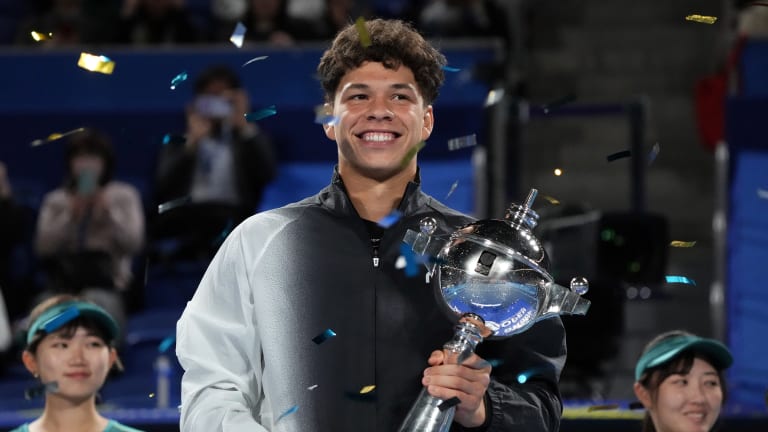Weekend Winners
Alexander Bublik, Gael Monfils and Ben Shelton are flashy champions with substance, too
By Oct 22, 2023Weekend Winners
“We’re working on new things,” Jannik Sinner says after Beijing triumph
By Oct 01, 2025Weekend Winners
Carlos Alcaraz says 2025 is his "best season so far without a doubt" after winning in Tokyo
By Sep 30, 2025Weekend Winners
Clutch play wins team comps for Jasmine Paolini, Taylor Fritz; Iga Swiatek shines in Seoul
By Sep 22, 2025Weekend Winners
Teen queens crowned: Iva Jovic, Tiantsoa Rakotomanga Rajaonah claim first WTA titles
By Sep 15, 2025Weekend Winners
How Carlos Alcaraz put a 'difficult month' behind him with his first Monte Carlo title
By Apr 13, 2025Weekend Winners
With clay titles, Jenson Brooksby and Jessica Pegula made 2025 all the more promising
By Apr 07, 2025Weekend Winners
Jessica Pegula and Emma Navarro got up after early-season stumbles to win their first titles of 2025
By Mar 03, 2025Weekend Winners
Carlos Alcaraz, Belinda Bencic or Denis Shapovalov: Whose title run could be the most significant for 2025?
By Feb 10, 2025Weekend Winners
Felix Auger-Aliassime—surprise, surprise—becomes the first two-title men’s champ of 2025
By Feb 02, 2025Alexander Bublik, Gael Monfils and Ben Shelton are flashy champions with substance, too
“You see the great champions, they finish weeks off," said Shelton, who won his first career title in Tokyo.
Published Oct 22, 2023
Advertising
Advertising

The 20-year-old Shelton will break the Top 15 Monday after winning in Tokyo.
© Getty Images